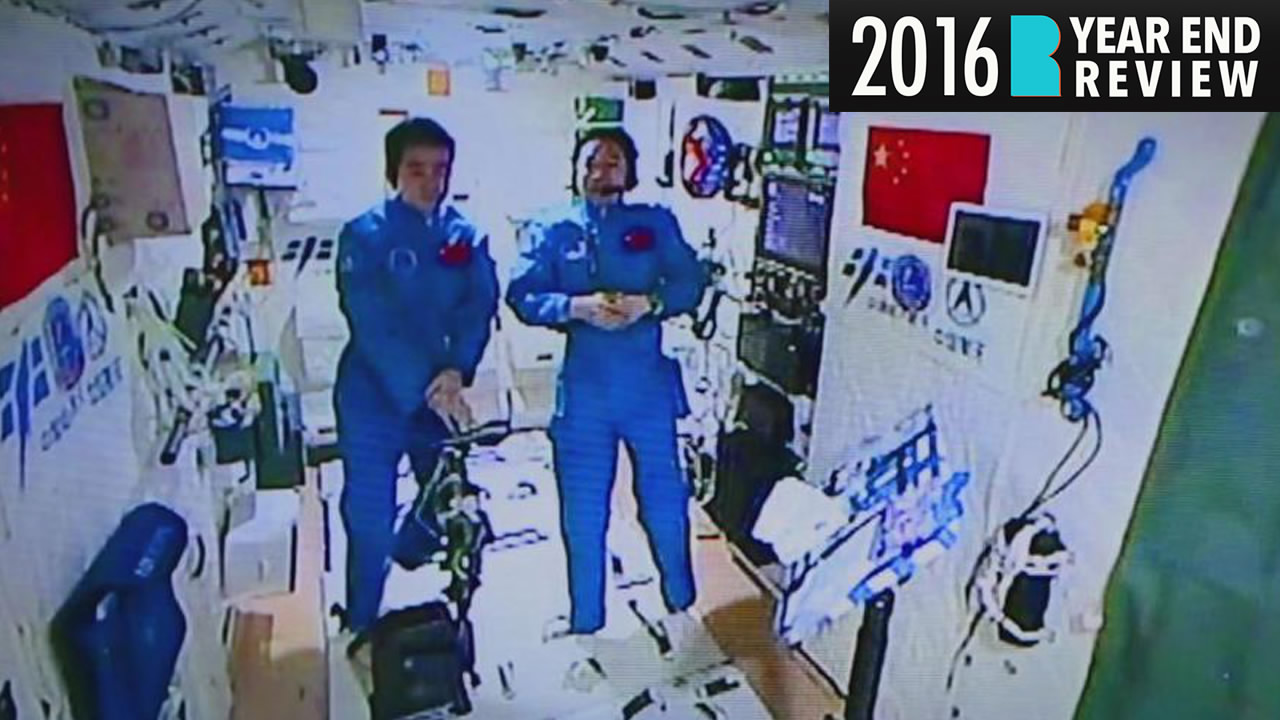-Record-setting mission puts rocket booster under national pride and consolidates China’s position as a new global pioneer in space travel
-Two astronauts spent 30 days in a “space lab,” conducting numerous experiments before returning safely to Earth
-China is now planning a trip to Mars and its own permanent space station
China was in the spotlight of the world – and perhaps beyond – in 2016, as it became the third country to complete space rendezvous and docking procedures. Two astronauts were sent to conduct experiments in a “space lab” for 30 days, another milestone in China’s increasingly ambitious space pursuit.
THE LONG MARCH INTO SPACE
The Tiangong-2 space lab, China’s most advanced to date, was carried into orbit by a Long March-2F rocket, roaring into the air from the Jiuquan Satellite Launch Center in northwest China underneath a full moon and as the nation celebrated its Mid-Autumn Festival on September 15.
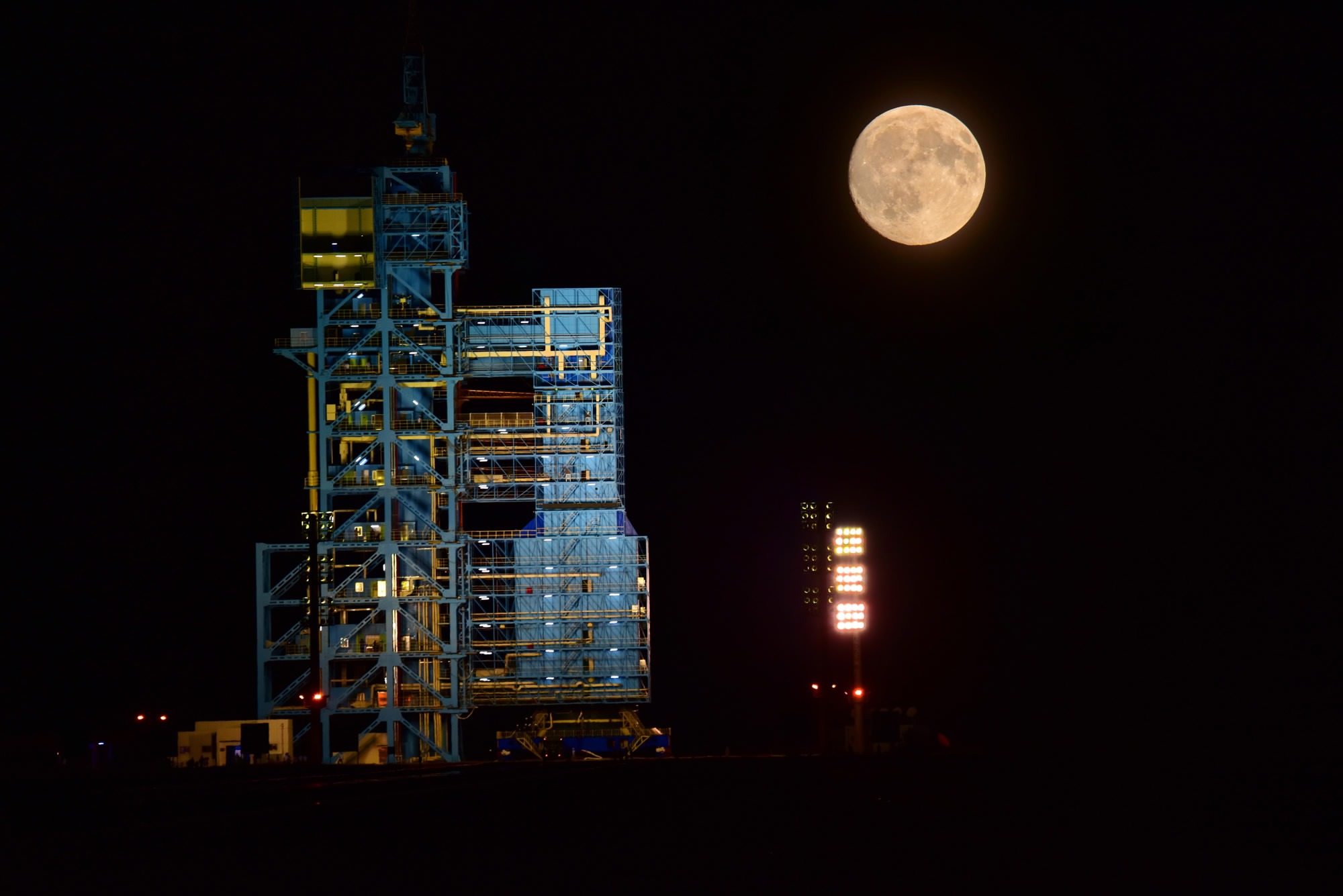
China's space lab Tiangong-2 roars upward on top of a Long March-2F rocket from the Jiuquan Satellite Launch Center in northwest China, September 15, 2016. /CFP Photo
China's space lab Tiangong-2 roars upward on top of a Long March-2F rocket from the Jiuquan Satellite Launch Center in northwest China, September 15, 2016. /CFP Photo
Just over one month later, on October 17, China's sixth manned spacecraft Shenzhou-11 was launched, carrying astronauts Jing Haipeng and Chen Dong into space. And on October 19, the spacecraft successfully docked with Tiangong-2.
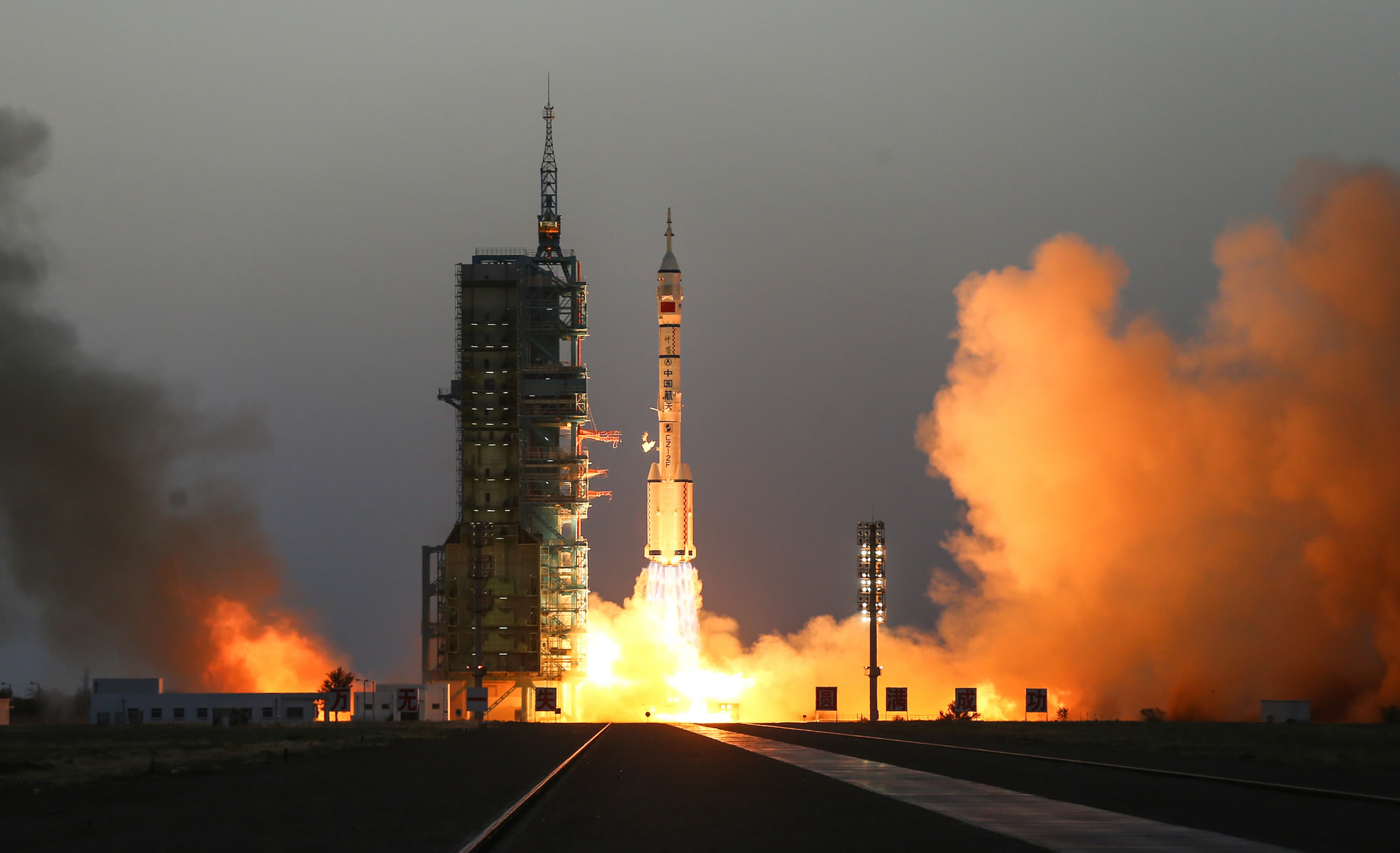
The Long March-2F carrier rocket carrying China's Shenzhou-11 manned spacecraft blasts off from the launch pad at the Jiuquan Satellite Launch Center in northwest China, October 17, 2016. /CFP Photo
The Long March-2F carrier rocket carrying China's Shenzhou-11 manned spacecraft blasts off from the launch pad at the Jiuquan Satellite Launch Center in northwest China, October 17, 2016. /CFP Photo
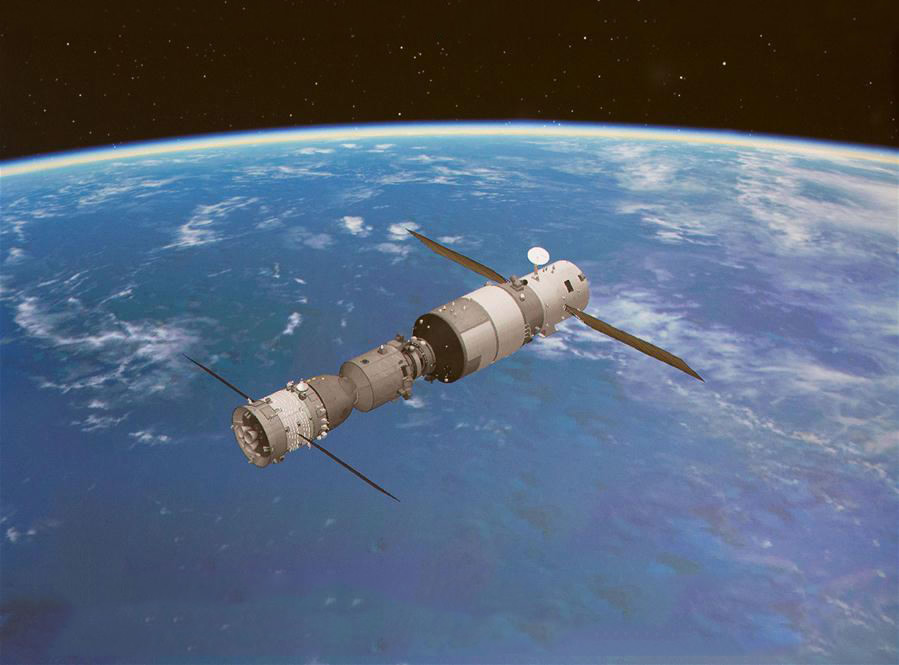
The screen at the Beijing Aerospace Control Center displays a simulated picture of the automated docking between Shenzhou-11 and Tiangong-2 on October 19, 2016. /Xinhua Photo
The screen at the Beijing Aerospace Control Center displays a simulated picture of the automated docking between Shenzhou-11 and Tiangong-2 on October 19, 2016. /Xinhua Photo
The astronauts entered the lab and spent 30 days in the module, breaking the country’s previous record of 15 days for a manned space mission set in 2013.
Chinese President Xi Jinping spoke with the two-man crew on November 9 from the Beijing Aerospace Control Center. He inquired about the astronauts’ work and well-being, before expressing hope for a successful completion of their mission.

Chinese President Xi Jinping speaks with Jing Haipeng and Chen Dong in the space lab from Beijing Aerospace Control Center on November 9, 2016. /Xinhua Photo
Chinese President Xi Jinping speaks with Jing Haipeng and Chen Dong in the space lab from Beijing Aerospace Control Center on November 9, 2016. /Xinhua Photo
Jing and Chen conducted 14 experiments in the lab, covering cutting-edge areas in both space materials science and space life science. They also performed three experiments designed by middle school students from Hong Kong, including raising silkworms in space.
Jing is a 50-year-old veteran who participated in the Shenzhou-7 and Shenzhou-9 missions, while this was 38-year-old Chen’s first space trip. The pair worked eight hours a day for six days a week. But there was time to relax a little too. They had access to almost 100 kinds of food and had contact with Earth through video, audio and emails. And there were also opportunities for exercise, with an exercise bike and a treadmill on board.
On November 18, after a month-long stay in space, the Shenzhou-11 re-entry capsule touched down on Earth in Siziwang Banner, Inner Mongolia. The two astronauts on board emerged from the capsule safe and sound.
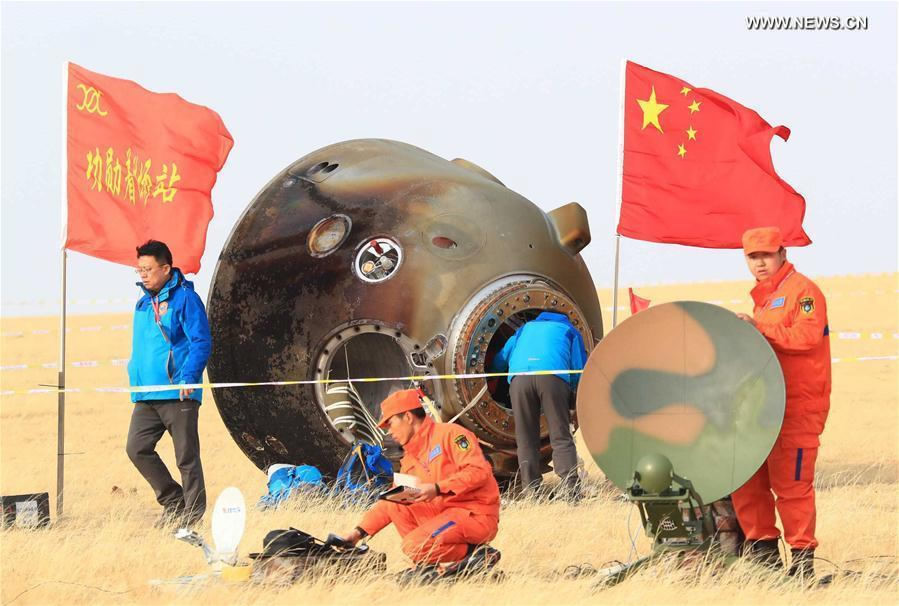
The re-entry capsule of China's Shenzhou-11 spacecraft successfully landed in north China's Inner Mongolia Autonomous Region on Nov. 18, 2016. /Xinhua Photo
The re-entry capsule of China's Shenzhou-11 spacecraft successfully landed in north China's Inner Mongolia Autonomous Region on Nov. 18, 2016. /Xinhua Photo
CHINA’S NEXT STEP IN SPACE
Tiangong-2 may literally mean “heavenly palace” in Chinese, but at 10.4 meters long and with a diameter of 3.35 meters at its widest point, the module is far from palatial. No matter the size, it does carry a grandiose promise that Chinese people have long dreamed of – delving further and further into the mysteries of space.
After the successful Tiangong-2 trip, China has plenty more grand plans for space exploration. Next on the list? A mission to Mars and the construction of China’s own permanent space station.
Questions for 2017
-China is aiming to launch its Mars probe in 2020 and to complete its first space station by 2022. What progress will it make towards these targets?
-Heads of China’s space program have promised opportunities for joint experiments with other countries and berths for foreign astronauts aboard the space station. How keen will other countries be to get involved, and what kind of international space partnerships will we see?
(Written by Meng Yaping; Edited by John Goodrich and Nick Yates; Video edited by Zhou Jinxi; and Room with a View produced by Zhang Dayu)

